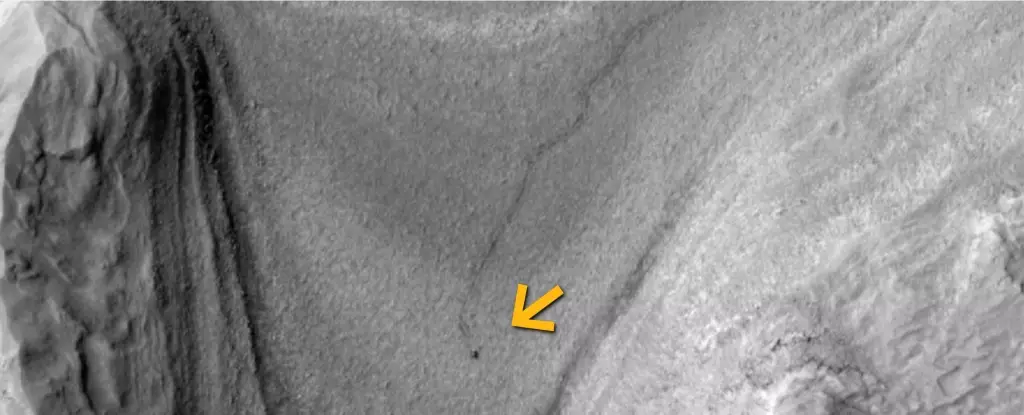Since its launch in late 2011 and subsequent landing in August 2012, NASA’s Curiosity rover has engaged in an extraordinary exploration mission on the surface of Mars. Amid the desolation of the Gale Crater, this lonely machine acts as humanity’s surrogate; it is not just a collection of circuits and metal, but a beacon of hope and endurance. Curiosity has been tirelessly unveiling the secrets of an alien world, offering insights that resonate with our planetary history while simultaneously presenting stark contrasts to Earth’s familiar landscapes.
The essence of Curiosity’s mission lies not solely in its scientific discoveries but also in the emotional narrative it weaves. Observations made by this solitary rover have compelled us to question our place in the universe. With every sol (a Martian day), Curiosity delves deeper into the geological and atmospheric anomalies of the red planet, providing intriguing glimpses into its watery past and potential for past life.
A Cosmic Snapshot: Mars from Above
Recently, a compelling image captured by NASA’s Mars Reconnaissance Orbiter has punctuated the importance of Curiosity’s presence. From the heavens, the orbiter took a snapshot that showcases Curiosity as a mere speck in the vast Martian landscape, trailing a fine gray line of wheel tracks behind it. This photograph highlights not only Curiosity’s persistence in navigating the rugged terrain of Mars but also emphasizes the incredible isolation of its existence. It is profound to consider that this small machine, far from its home planet, continues its scientific endeavors, all while embodying the spirit of exploration.
The orbiter’s image captures the essence of Curiosity’s journey: a long, winding path etched into the Martian sands over a strenuous 11 drives, covering approximately 320 meters. This modest measure of distance, while seemingly insignificant in the broader expanse of the cosmos, symbolizes the persistent, painstaking work undertaken by this robotic emissary.
The Mechanics of Exploration: Curiosity’s Challenges
Curiosity is designed with precision and purpose, achieving feats of exploration through orchestrated movements rather than swift endeavors, which underscores its unique engineering. Its slow, deliberate progress—limited to about 160 meters per hour—serves multiple purposes, including efficient energy conservation and risk management. Unlike human explorers, Curiosity must navigate a landscape that is unpredictable and laden with obstacles.
Running on a modest 110-watt nuclear generator, Curiosity embodies a different approach to exploration. Each movement, each turn of its wheels, is like a chapter in a story filled with caution, strategy, and calculation. By ensuring its sustained functionality, scientists can extend its operational life, providing more data and insights than would otherwise be attainable.
The Geological Talents of Mars
Delving into the geological landscape, Curiosity’s journey has led it to the Gediz Vallis channel—a region believed to have been shaped by cascading torrents of ancient water. Along this route, the rover has discovered intriguing formations, including pure sulfur deposits that warrant further scientific investigation. These findings prompt deeper inquiries into Mars’ icy past and the sedimentary narrative etched in its rocks.
Curiosity’s quest has taken it further into the Martian wilderness as it traverses the textured terrains of Devil’s Gate, Cahuilla, and Santa Ynez. Every geological feature explored is a step closer to illuminating the planet’s enigmatic history, particularly the ‘boxwork formations’ that await examination at the base of Mount Sharp. The beauty of these formations lies in their potential: shaped by mineral deposits over eons, they whisper clues about ancient biological activity that we may yet uncover.
Searching for Signs of Life: The Promise of Discovery
The ongoing exploration of these Martian formations serves a dual purpose; not only do they tell of Mars’ geological narrative, but they may also hold clues about the presence of ancient life. The environmental conditions that created these structures could suggest more hospitable realms where microbial life might have thrived. If traces of past life can be located, understanding the planet’s history could redefine humanity’s comprehension of life and its resilience in the cosmos.
Curiosity is not merely a machine; it embodies the essence of human curiosity—a relentless pursuit of knowledge in the face of uncertainty. Years after its initial landing, it continues to traverse the stark landscape of Mars, representing our innate desire to understand our world and beyond.


Leave a Reply